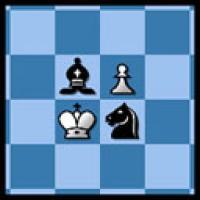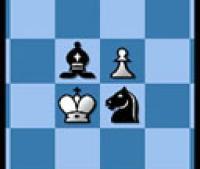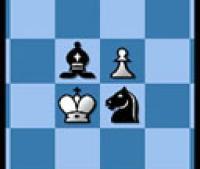
Book Review: Chess Tactics For Champions
Sure, I know what you are thinking: "YATB, Stick? Really?" Yup, that's right, Yet Another Tactics Book, folks. I figure that I can always do with some more tactics study in whatever form it might take, and Susan Polgar's Chess Tactics For Champions came recommended to me by likesforests. How could I resist?
Polgar covers a wide array of tactics, and instead of attempting some sort of clever literary trick, I'll just give you a list of the topics covered:
- Forks and Double Attacks
- Pins
- Deflection/Removing the Guard
- Discoveries
- Double Check
- Skewers
- Trapping Pieces
- Decoys
- Intermediate Moves
- Pawn Promotion
- The Back-Rank Problem
- Destroying the Castled King's Defenses
- King Chase
- Mixed Checkmates in Two/Three/Four Moves
- Game-Saving Combinations
- Perpetual Check
- Stalemate
- Traps and Counter-Traps
- Sibling Positions
- Famous Combinations
If you have studied any tactics at all, you've no doubt crossed paths with most, or at least some, of these tactical motifs. With each topic, Polgar includes a short description of the tactic followed by an example from one of her own games and then jumps right into a set of problems to solve. Most chapters include 25 problems for the student, although a small subset have as many as 50 problems and others have as few as 20.
Possibly the most interesting aspect of this book was it's uncanny accuracy in gauging my knowledge of each tactical motif. After beating myself rather thoroughly about the head with Dan Heisman's excellent Back To Basics: Tactics, I had very little difficulty with solving the problems in Chess Tactics For Champions which were also covered in Heisman's book. Similarly, having studied from Vucovic's Art Of Attack, I had not much trouble with attacks against the castled King.
On the other hand, topics such as drawing positions and checkmates in N moves, which I had previously not studied in depth, I found considerably more difficult, and I'll be working hard to absorb the solutions to these problems in the near future. So, for me, this text was an excellent diagnostic tool.
My biggest complaint with Chess Tactics For Champions is with its usefulness for further study. Fairly obviously, for the tactical motifs with which I had trouble, this book will be useful while I internalize those ideas. After that however, I'm not sure it will be much use. This will make a bit more sense if I describe what some other tactics texts contain and what Polgar's book does not.
In both Heisman's Back To Basics: Tactics and Seirawan's Winning Chess Tactics there are sections containing problems of mixed types. This is a good thing, because when I know what type of tactic is to be used to solve a problem, finding the solution is much easier than seeing a solution to a position in a real game. So now, whenever I return to either of these books, I have sets of problems to solve where I don't have prior knowledge of the necessary tactic.
Polgar's book has no such section of mixed problems, so it's always painfully obvious which tactic needs to be played. This is great for learning a tactic, but not so good for future practice.
If I find myself with enough time and energy I may scan all these problems into my computer and make flash cards out of them. A rather monumental task, but probably well worth the effort. Inertia is a serious hurdle, however!
I have a bit of a problem determining the audience for which this text is best suited. As I said earlier, some sections gave me trouble while other were a breeze. The back cover of this book says that the book is for "intermediate to advanced" players, and while there is a very short description of what "intermediate" and "advanced" mean in this setting, it is rather ambiguous. Given all of that and the fact that I would consider other tactics books have better descriptions of most of these tactics, Chess Tactics For Champions probably shouldn't be your first book about tactics, but with it's copious number of problems to solve and it's relatively well documented solutions this should be an excellent second tactics book.
The subtitle of this book reads "A Step By Step Guide To Using Tactics And Combinations The Polgar Way," and I think that is a bit misleading. I was rather hoping for some over-arching, systematic method of study which Polgar either plays or teaches. One could argue that there is a "Seirawan Method" in the Winning Chess series, or a "Silman Method" in How To Reasses Your Chess. There doesn't really seem to be anything of the sort going on in Polgar's book.
All in all, I consider this book a useful tool in my development as a chess player. If you, like me, find quizzes and puzzles the best way to improve your chess play, I suggest you add Chess Tactics For Champions to your library.
As always, I'm Stick, your resident wordslinger, and I'll see y'all out there on the gridiron!
If you found this review useful, you might want to have a look at my other articles.






